Home & Living Inspirational interior and exterior design seamlessly blend aesthetics and functionality. Discoveries that evoke emotions and make you dream.
Clean Air In My Home
In a prior Sidenote, I discussed the significance of ventilation in our homes. This subsequent article addresses the unsettling reality that the air you introduce from outside may not be as clean as perceived. Given its invisibility and predominantly odourless nature, it becomes essential to visualise this by employing a device capable of revealing particulate matter (PM). Particulate Matter (PM) comprises solid and liquid particles suspended in the air, categorized as coarse, fine, and ultrafine.
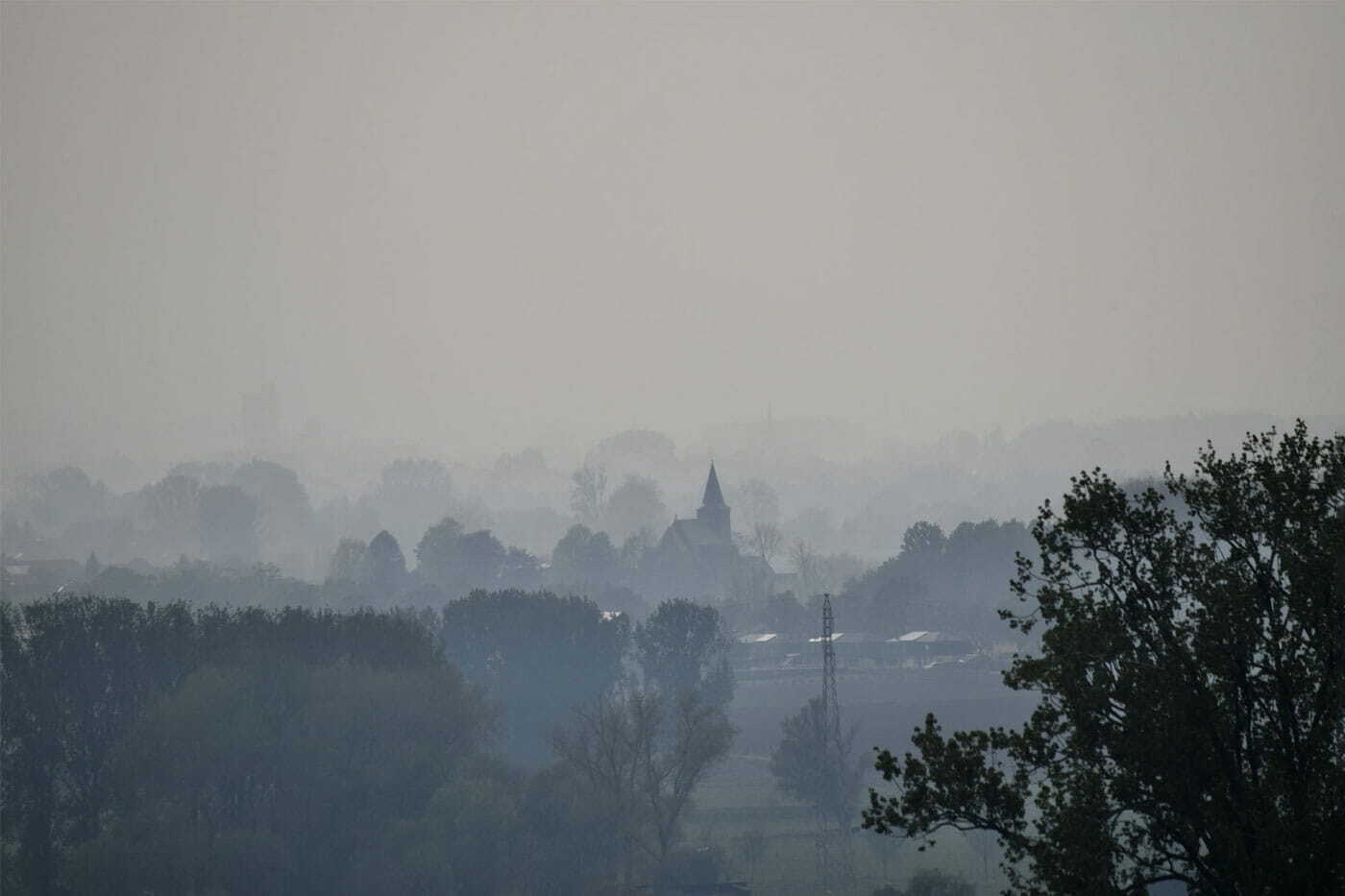
Oudenaarde, Belgium.
Many people might not be aware, just as I once was, but currently, 98 percent of Europeans are affected by air pollution. The concentrations of particulate matter frequently exceed the World Health Organization (WHO) standard of 5 micrograms per cubic meter, with at least two-thirds of the population experiencing levels that are double the recommended threshold.
Particulate matter originates from combustion processes in the exhaust gases of diesel engines and industrial operations. It is also generated through chemical reactions with ammonia in the agricultural sector and the heating of buildings.
'Clean' Diesel & Petrol
There are still individuals and lobbyists who believe/promote that 'clean diesel' exists and that the newer ones with Euro 7 and Euro 6 standard are A ok, so we should continue to use them as technology solved the problems. A quick bicycle ride wouldn’t have to take long to reveal the stark reality of their cleanliness—or lack thereof. Petrol isn’t much better.
Wood
The burning of wood is another factor with a notable impact. One can only hope that it is beautifully dried wood and not fiberboard, plywood, painted wood. Trust me, you can detect the difference by the smell.
'Green' Pellets
Oh and let’s not forget the ‘magical’ green pellets. The marketing sounds wonderful. “Burning wood or wood pellets brings us a little closer to nature. It invites us to use energy more consciously. Because heating yourself with wood or pellets is CO2 neutral. It does not produce greenhouse gas emissions”.
The necessity to burn them still contributes to increased pollution exposure by adding more ‘Ultra Fine Particles’. To get a good idea of how small these particles actually are, you need to know that one millimeter is one thousand micrometers and one million nanometers. The unit for the UFP concentration is particles/cm³. The unit for PM0.1 is micrograms per cubic meter (µg/m³). Ultrafine Particle (UFP) particles are so minuscule that, upon inhalation, they enter your bloodstream directly and have the potential to cause damage anywhere in your body. See illustration below for context.
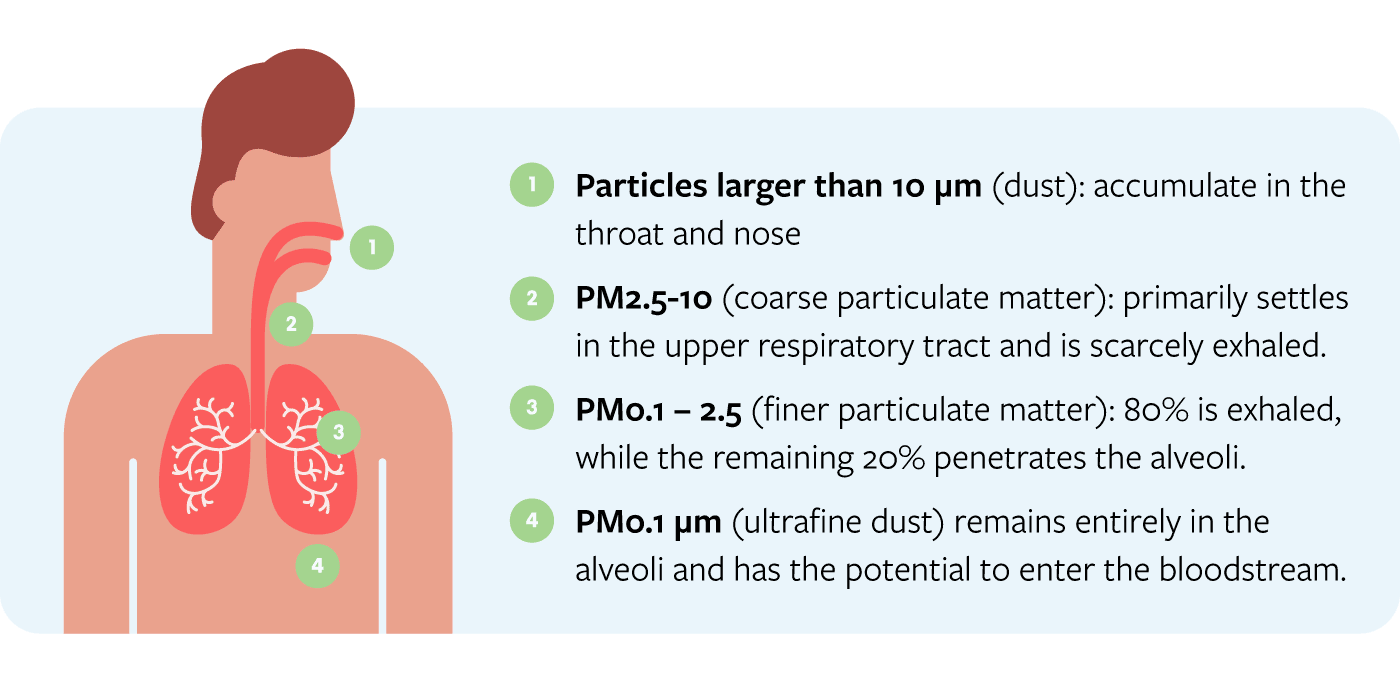
How particles enter the human body.
Every so often, I catch the scent of burning wood through the ventilation system when the wind carries it in the wrong direction, usually when one of the houses in the neighborhood decides to create a ‘cozy’ atmosphere by burning wood. If you ask yourself ‘which type of stove pollutes the least?’ You can find that out on the official site of the Flemish Environment Agency. (article in Dutch but you can translate it)
Premature Deaths
Roughly 300,000 premature deaths within the European Union are attributed to polluted air each year. Additionally, the burden is heaviest on the smallest lungs. Children, who breathe at a rate twice as fast and frequently through their mouths, face increased exposure to air pollution. Their proximity to the ground, where pollutants tend to accumulate, further heightens the risk. More than 90 babies die every week in Europe from air pollution (UNICEF).
A recent investigation conducted by the European Association for Medical Oncology (ESMO) indicates a potential association with breast cancer. While this connection has been proposed previously, a significant 20-year French study, involving thousands of women, now reveals that the risk of breast cancer rises by 28 percent with a 10 microgram per cubic meter increase in exposure to the most harmful dust particles—those smaller than 2.5 micrometers (PM2.5). This difference is roughly equivalent to the contrast between rural and urban areas in Europe.
In September 2023, the European Parliament resolved to harmonize the EU standards of 25 micrograms per cubic meter with the more rigorous guidelines set by the World Health Organization (WHO). However, the implementation of this adjustment is deferred until 2035, pending an agreement with the member states. The aim is to have no air pollution by 2050 in the interests of public health, ecosystems and biodiversity.
Air Purifier
That's enough introduction to finally address the topic I intended to write about. I felt it was necessary for you to better comprehend the context. As mentioned earlier, the initial step involves using a 'smart' sensor, such as the Ikea product called 'VINDSTYRKA'. This device features a straightforward color scale and a numerical indicator. Once you determine the pollution level, the next step is to purify the air using an air purifier. For now, let's focus on Ikea and discuss the 'STARKVIND'. While I can't guarantee its effectiveness, it is known to be an affordable option. To make it ’smart’ you need to add it to the IKEA Home Smart-app otherwise it’s just ‘dumb’ with a rotary and push button. The reviews are quite good. Just like the other smart products from IKEA, the underlying protocol for this smart air purifier is ZigBee. And that of course opens doors to other integrations. You also have support for Google Home and Google Assistant. There is also support for Amazon Alexa, Siri and Apple HomeKit.
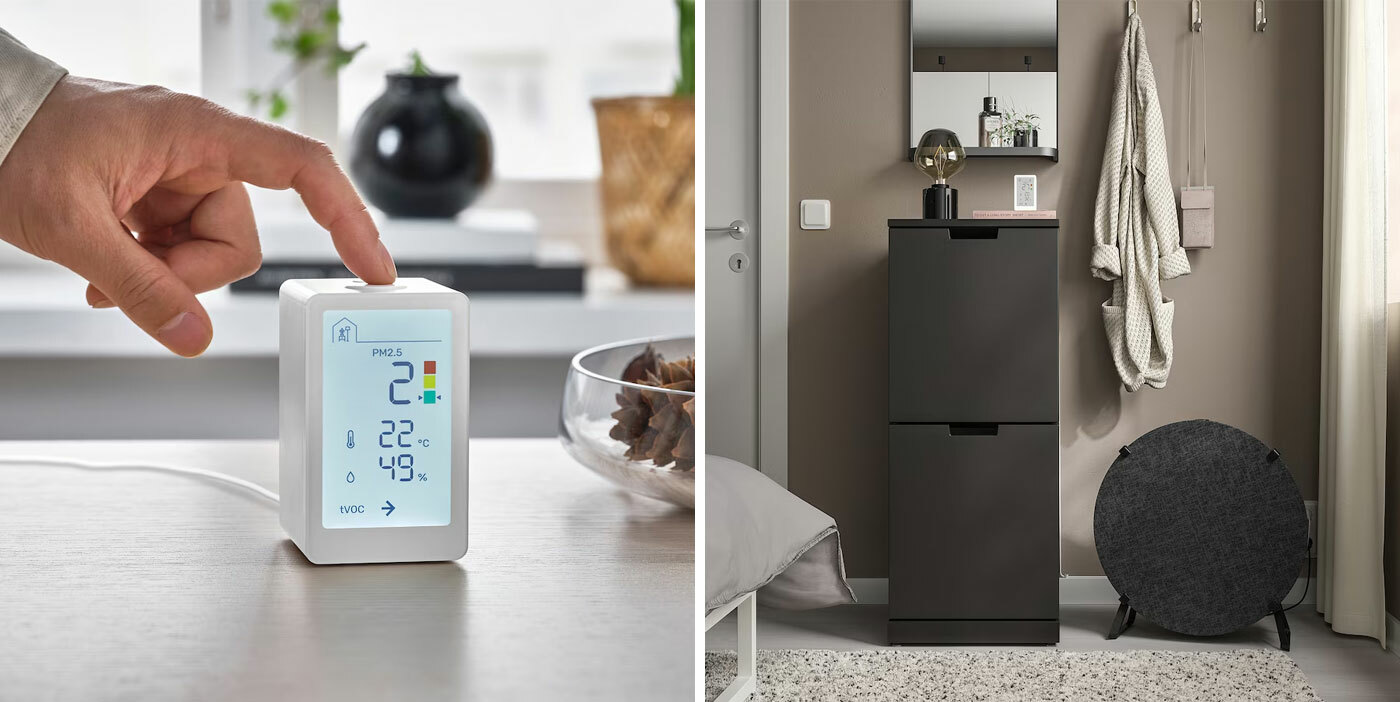
Ikea Vindstyrka and Starkvind.
I personally own the VINDSTYRKA, but for air purification, I prefer using the AEG AX 9. Although it's pricier than the Ikea model, I appreciate its aesthetic and, more importantly, its effectiveness. I acquired this device before installing a ventilation system, and it used to kick in almost every time I opened the windows. On numerous occasions I had numbers that were in the very poor scale.
While it operates less frequently now due to the ventilation system filters also capturing particles, it still plays a vital role in my home. Indoor activities also generate particulate matter and nitrogen dioxide, by burning tobacco, wood and candles and cooking with gas. This device will make it apparent how harmful these activities can be.
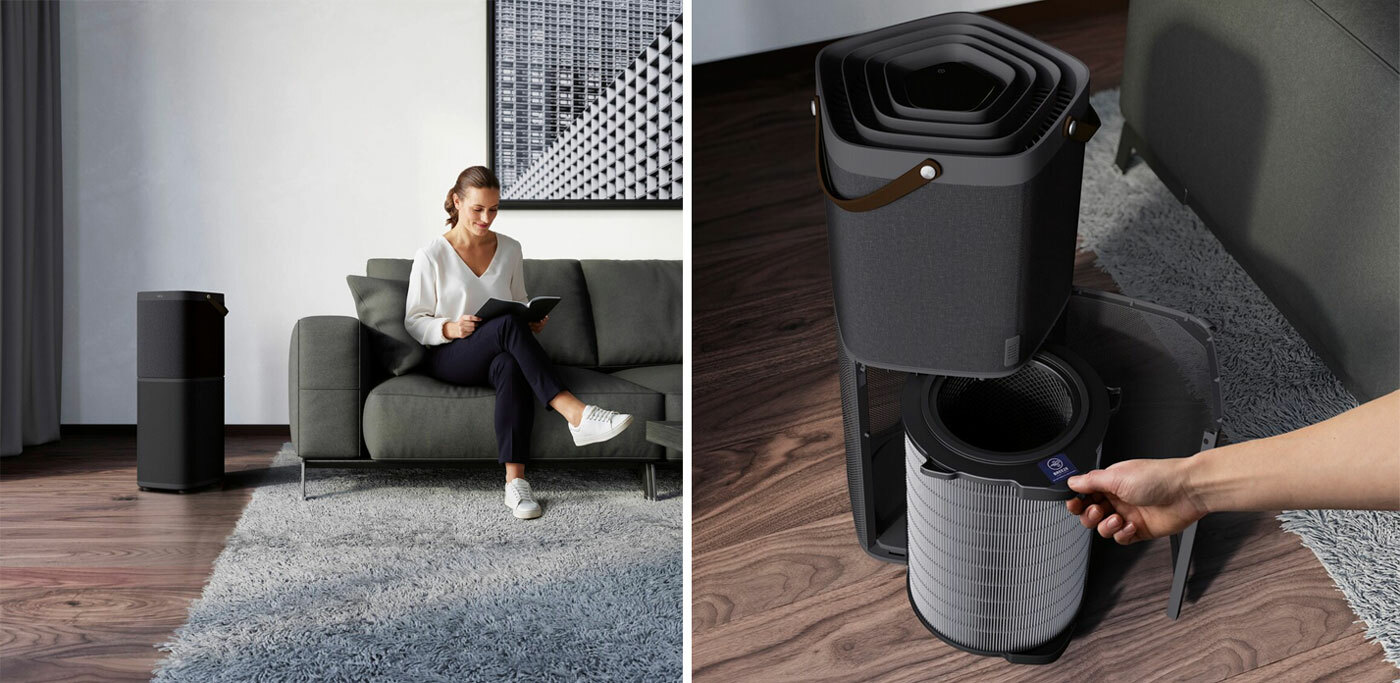
The AEG AX 9 display is straightforward, indicating the current mode and color scale that you are in. By connecting it to an app, you gain access to more comprehensive data such as PM 1, PM 2.5, PM 10 levels, humidity, temperature, and TVOC (Total Volatile Compounds). TVOC measures gases emitted by certain solids and liquids, and you can track all the above mentioned metrics over hours, days, and months.
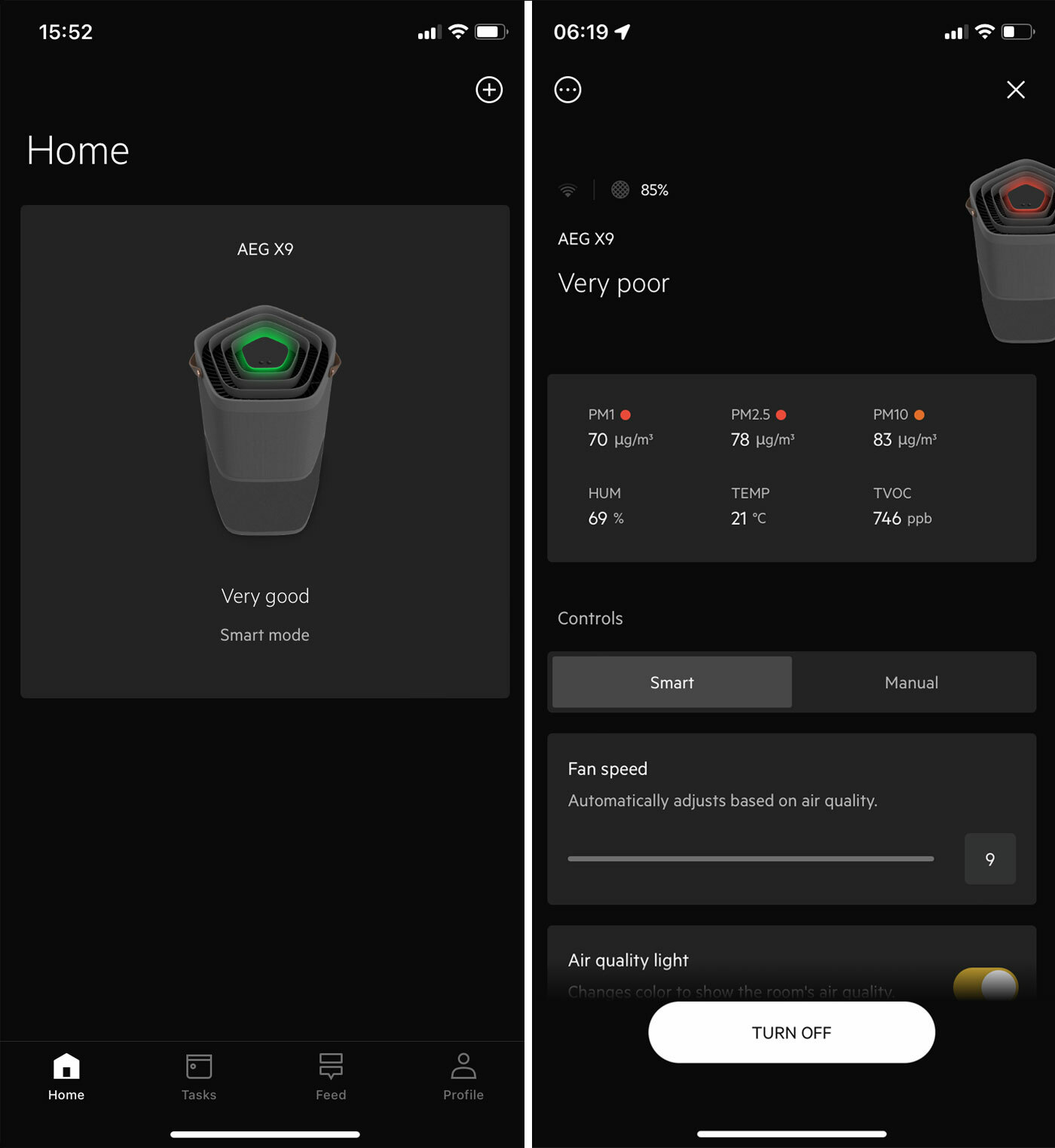
The AEG AX 9 iPhone app.
Dyson also has the Dyson Pure Cool.
What Else Can You Do?
The biggest of them all is ’Stop burning stuff’.
Walk, cycle or use public transport or share vehicle wherever possible. If you want to reduce the footprint of your food focus on what you eat, not whether your food is local. A must read by Hannah Ritchie. Eat less meat, particularly beef. Personally I only eat meat 3x a week now. When I do, I stick to 100 gram a day rule and it’s mostly chicken. Before I start doing this I consumed meat 7 days a week and in larger amounts. Honestly I’m not missing it at all.
Oudenaarde photo from Unsplash by moon-app .com

